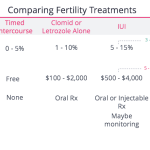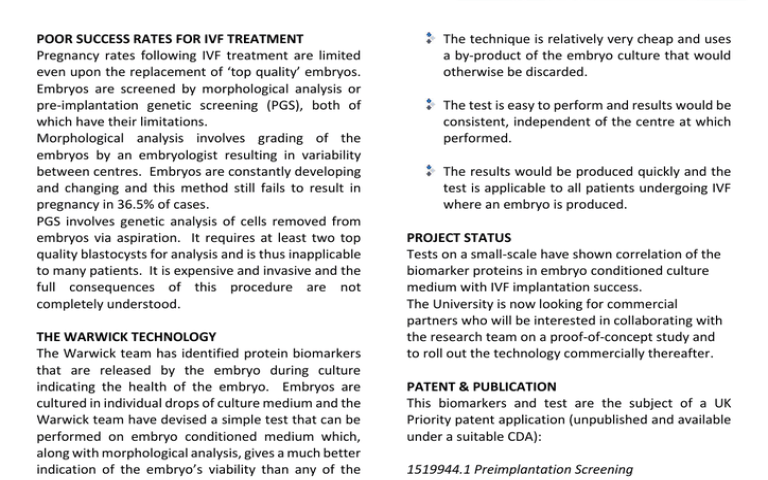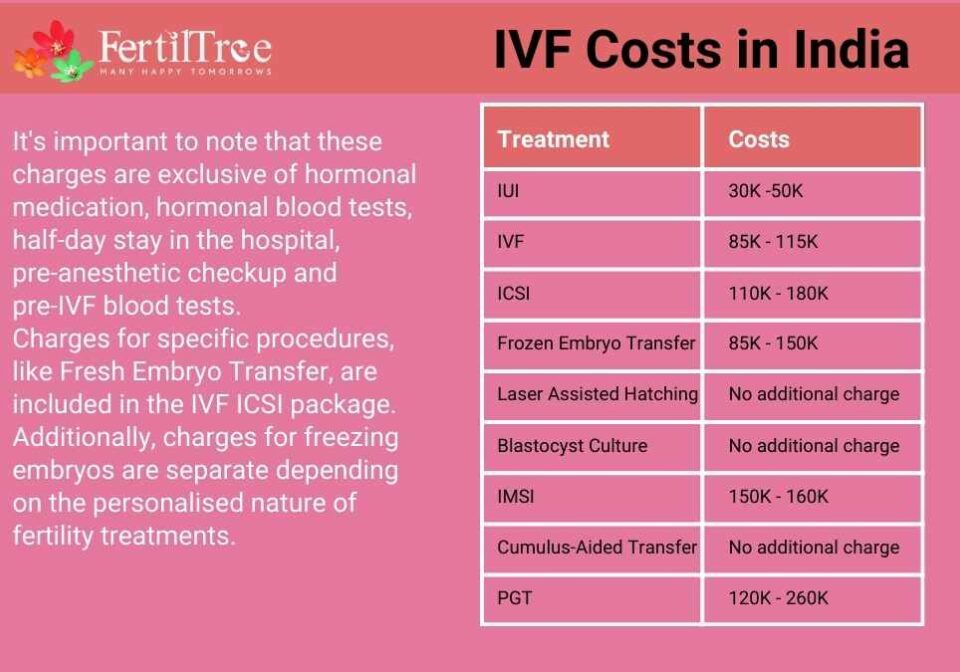
Which Is Associated with IVF-ET? Exploring In Vitro Fertilization and Embryo Transfer
April 10, 2025
Does Cigna Cover IVF? Your Guide to Understanding Fertility Coverage
April 10, 2025What Is Precycle Screening for IVF?

What Is Precycle Screening for IVF?
When you’re thinking about starting a family through in vitro fertilization (IVF), it can feel like stepping into a whole new world. There’s excitement, hope, and maybe a little nervousness too. One of the first stops on this journey is something called precycle screening. If you’ve never heard of it before, don’t worry—you’re not alone! Precycle screening is like the groundwork that helps make sure everything’s set for a successful IVF experience. It’s not just a random checkup; it’s a tailored process to get you and your doctor ready for what’s ahead.
In this article, we’re diving deep into what precycle screening is all about. We’ll break it down into bite-sized pieces so you can understand why it matters, what happens during it, and how it can boost your chances of welcoming a little one. Whether you’re just curious or actively planning IVF, stick around—this is going to be your go-to guide!
Why Precycle Screening Matters
Imagine building a house. Before you start hammering nails or pouring concrete, you need to check the soil, make sure the land is level, and figure out if there are any hidden surprises underground. Precycle screening is a lot like that—it’s the prep work that ensures your IVF journey starts on solid ground. Doctors use it to spot anything that might get in the way of a healthy pregnancy, from hormone levels to hidden health issues.
The goal? To give you the best shot at success. IVF isn’t a one-size-fits-all process, and precycle screening helps personalize it for you. Studies show that addressing potential problems before starting IVF can improve pregnancy rates by up to 20% in some cases. That’s a big deal when you’re putting your heart and hopes into this!
A Quick Peek at the Benefits
- Catches Issues Early: Finds problems like low ovarian reserve or infections before they derail your plans.
- Saves Time and Money: Fixing things upfront can prevent failed cycles, which can cost $12,000-$25,000 each.
- Boosts Peace of Mind: Knowing you’re starting with a clear picture feels empowering.
So, it’s not just about jumping through hoops—it’s about setting yourself up to win.
What Happens During Precycle Screening?
Precycle screening isn’t one single test; it’s a series of checks that look at your body from different angles. Think of it as a full-body tune-up before a big race. Here’s what you can expect when you walk into the clinic.
Step 1: Blood Tests Galore
Your doctor will probably start with a few vials of blood—don’t worry, it’s quick! These tests check things like:
- Hormone Levels: Follicle-stimulating hormone (FSH), luteinizing hormone (LH), and estrogen tell doctors how your ovaries are doing.
- AMH (Anti-Müllerian Hormone): This is a big one—it shows how many eggs you might have left, also called your ovarian reserve.
- Thyroid Function: An out-of-whack thyroid can mess with fertility, so they’ll make sure it’s in check.
- Infectious Diseases: HIV, hepatitis B and C, and other bugs get screened to protect you and a future baby.
For example, if your AMH is low, it doesn’t mean IVF is off the table—it just helps your doctor tweak the plan, maybe with extra meds to coax out more eggs.
Step 2: A Look Inside
Next up, they’ll peek at your reproductive system. This usually means:
- Ultrasound: A wand (yep, sometimes internal) checks your ovaries and uterus. They’re looking at egg count, fibroids, or cysts.
- Hysterosalpingogram (HSG): This X-ray uses dye to see if your fallopian tubes are open. Blocked tubes won’t stop IVF, but it’s good to know.
One woman I heard about found a small polyp during her ultrasound. It was no biggie—just a quick fix before IVF—but it could’ve caused trouble later if missed.
Step 3: Partner Check
If you’re using a partner’s sperm, they get in on the action too. A semen analysis looks at sperm count, movement, and shape. Even if everything seems fine, this step confirms there’s enough healthy swimmers for the job.
Step 4: Lifestyle Chat
Your doctor might sit you down to talk about habits. Smoking, heavy drinking, or even too much caffeine can affect IVF. They’re not judging—they just want you firing on all cylinders.
By the end, you’ll have a detailed map of your fertility landscape. It’s like getting the full scoop before a road trip—you know where the bumps are and how to steer around them.
Who Needs Precycle Screening?
You might be wondering, “Is this for everyone?” Pretty much, yeah! Whether you’re 25 or 40, single or partnered, precycle screening is standard for anyone heading into IVF. But it’s especially key if:
- You’ve had trouble getting pregnant before.
- You’re over 35 (egg quality starts to dip around then).
- You’ve got a health condition like PCOS or endometriosis.
- You’ve had miscarriages or funky periods.
Even if you feel healthy as a horse, little things can hide under the surface. One study found that 1 in 5 women going into IVF had an undiagnosed issue—like a thyroid glitch—that screening caught. That’s why it’s a must-do, no exceptions.
Fun Fact: Did You Know?
Doctors sometimes tweak screening based on your story. If you’ve got a family history of genetic stuff, they might add a DNA test. It’s all about you!
How to Prepare for Precycle Screening
Getting ready for precycle screening doesn’t take much, but a little prep goes a long way. Here’s your game plan:
Before You Go
- Timing Matters: Schedule it early in your menstrual cycle (days 2-5) for the most accurate hormone reads.
- Skip the Coffee: Some tests, like thyroid ones, work best if you haven’t had caffeine.
- Bring Your History: Jot down past pregnancies, surgeries, or meds—your doctor will love the details.
- Ask Questions: Write down anything you’re curious about, like “What if my egg count’s low?”
During the Visit
- Relax: The tests are routine—nothing to stress over.
- Wear Comfy Clothes: Ultrasounds might mean undressing from the waist down.
After the Results
Once the numbers are in, your doctor will explain what they mean. If something’s off, don’t panic—most issues have fixes, like tweaking hormones or clearing an infection.
✔️ Pro Tip: Keep a notebook for results and next steps. It’s your IVF playbook!
❌ Don’t: Skip follow-ups. If they say “recheck in a month,” do it—timing’s everything.
What the Results Tell You
So, you’ve got your precycle screening done—now what? The results are like a report card for your fertility. Here’s what they might show:
| Test | What It Means | If It’s Off |
|---|---|---|
| FSH | How hard your body’s working to make eggs | High = fewer eggs, might need meds |
| AMH | Your egg stash size | Low = fewer eggs, but IVF can still work |
| Ultrasound | Uterus and ovary health | Cysts or fibroids might need a fix |
| Semen Analysis | Sperm quality and quantity | Low count? ICSI might help |
| Thyroid (TSH) | Metabolism’s role in pregnancy | Too high/low = meds can balance it |
Real Talk: A Case Study
Take Sarah, 32, who did her screening last year. Her AMH was on the low side, but her ultrasound was clear. Her doctor upped her meds a bit, and boom—six good eggs in her first IVF round. Without screening, they might’ve missed that tweak.
Results aren’t a pass/fail—they’re a roadmap. If your egg count’s low, it’s not game over; it just means a different strategy. Same goes for sperm or uterus quirks.
Common Problems Screening Catches (and Fixes!)
Precycle screening isn’t just about numbers—it’s about spotting roadblocks. Here are some usual suspects it finds, plus how they’re tackled:
1. Low Ovarian Reserve
- What It Is: Fewer eggs than expected for your age.
- Fix: Higher doses of fertility drugs or donor eggs if needed.
- Stats: About 10% of women under 35 have this, per a 2023 fertility study.
2. Uterine Issues
- What It Is: Fibroids, polyps, or scar tissue in the uterus.
- Fix: Minor surgery to clear things out—usually quick and outpatient.
- Example: One clinic saw a 15% jump in success rates after fixing these.
3. Infections
- What It Is: Silent bugs like chlamydia or hepatitis.
- Fix: Antibiotics or antivirals, done before IVF starts.
Interactive Quiz: What’s Your Screening Savvy?
Think you’ve got the basics down? Test yourself!
- What hormone shows your egg stash?
- A) FSH B) AMH C) Thyroid
- True or False: Screening’s only for women over 35.
- What’s one fix for low sperm count?
(Answers: 1-B, 2-False, 3-ICSI. How’d you do?)
The Emotional Side of Precycle Screening
Let’s be real—waiting for results can feel like forever. You might be nervous about what they’ll find or hopeful they’ll say everything’s perfect. That’s totally normal. One mom-to-be I chatted with said, “I was terrified my eggs were kaput, but knowing gave me power to plan.”
Here’s how to keep your cool:
- Talk It Out: Lean on a friend, partner, or even an online IVF group.
- Focus on What You Can Control: Eat well, sleep, and skip the stress snacks.
- Celebrate Small Wins: Clear results? That’s a victory!
Doctors say stress doesn’t tank IVF success, but feeling good can’t hurt. So, give yourself some grace—this is a big step!
New Twists in Precycle Screening (Fresh Stuff!)
Most articles out there stick to the basics—blood, ultrasound, done. But precycle screening’s evolving, and there’s cool stuff happening that doesn’t always get the spotlight. Here’s what’s new in 2025:
1. Genetic Screening 2.0
Some clinics now offer deeper DNA checks before IVF, looking for tiny gene glitches that could affect pregnancy. A recent study from the American Society for Reproductive Medicine found that 8% of couples had a genetic tweak that screening caught—info that helped them pick healthier embryos later.
2. AI-Powered Predictions
Artificial intelligence is sneaking into fertility clinics. AI can crunch your screening data—like AMH, age, and lifestyle—and predict how many eggs you might get. One pilot program in California boosted accuracy by 25% compared to old-school guesses.
3. At-Home Testing Kits
Yep, you can start screening from your couch now! New kits let you prick your finger, mail in a sample, and get hormone levels back in days. They’re not full replacements yet, but they’re a game-changer for early intel—especially if you’re rural or busy.
These twists aren’t everywhere yet, but they’re popping up fast. Ask your clinic if they’re on board—it could give you an edge.
Precycle Screening Myths—Busted!
There’s a lot of chatter out there about precycle screening, and not all of it’s true. Let’s clear the air:
Myth 1: It’s Super Expensive
- Truth: Costs vary ($500-$2,000), but many insurance plans cover parts of it. Some clinics bundle it into IVF packages too.
Myth 2: Bad Results Mean IVF Won’t Work
- Truth: Nope! Low egg count or a funky uterus doesn’t doom you—it just shifts the plan. Success stories abound with “imperfect” results.
Myth 3: It Takes Forever
- Truth: Most screening wraps up in a week or two, depending on lab speed. It’s a sprint, not a marathon.
Heard something weird? Double-check with your doctor—don’t let rumors throw you off.
How Precycle Screening Ties Into IVF Success
Here’s the million-dollar question: Does all this poking and prodding really make IVF work better? Short answer—yes. Long answer—let’s break it down.
The Data Says…
A 2024 study in Fertility and Sterility tracked 1,000 IVF patients. Those who fixed screening red flags (like thyroid issues or polyps) had a 35% higher live birth rate than those who skipped it. Another report found that catching infections early cut miscarriage rates by 10%.
Why It Works
- Custom Plans: Screening tailors your meds and timing. More eggs, better embryos.
- Fewer Surprises: No one wants a cycle canceled because of a sneaky fibroid.
- Healthy Start: Clearing infections or balancing hormones sets up a cozy womb.
Think of it like prepping a garden—good soil grows better plants. Precycle screening’s your fertilizer.
Your Next Steps After Screening
Results in hand—now what? Here’s a step-by-step guide to keep the ball rolling:
Step 1: Chat with Your Doc
Sit down (in person or virtual) to go over every number. Ask:
- “What’s the biggest thing to tackle?”
- “How will this change my IVF plan?”
Step 2: Fix What You Can
- Low thyroid? Start meds.
- Polyp? Schedule a quick removal.
- Sperm hiccup? Explore options like ICSI (sperm injection).
Step 3: Lifestyle Boost
While you wait to start IVF:
- Eat Smart: Think Mediterranean—fish, nuts, veggies.
- Move It: 30 minutes of walking daily can up egg quality.
- Chill Out: Yoga or meditation keeps stress low.
Step 4: Plan the Cycle
Your doctor will map out meds, egg retrieval, and transfer dates based on screening. It’s go time!
✔️ Bonus Tip: Track your cycle with an app—it helps sync with the clinic’s timeline.
Interactive Poll: What’s Your IVF Goal?
We’re curious—what’s driving you toward IVF? Vote below and see what others say!
- A) Starting my family
- B) Overcoming infertility
- C) Growing my family (already have kids)
- D) Just exploring options
(Results show up next week—stay tuned!)
Precycle Screening Around the World
Here’s a fun twist—precycle screening isn’t the same everywhere. In the U.S., it’s pretty thorough, but other spots do it differently:
- Europe: Often includes extra genetic tests, especially in places like Spain, a big IVF hub.
- Asia: Japan skips some bloodwork unless you’ve got symptoms, keeping it minimal.
- Australia: Loves adding lifestyle counseling—think diet and exercise plans.
A global survey last year found 85% of top clinics tweak screening based on local norms. So, if you’re traveling for IVF, ask what’s standard where you’re headed.
The Cost Factor (and How to Handle It)
Let’s talk cash—precycle screening isn’t free, but it’s not a dealbreaker either. Here’s the scoop:
- Average Cost: $500-$2,000, depending on tests and location.
- Insurance: Some plans cover hormones and ultrasounds—call yours to check.
- Savings Hack: Ask about payment plans or sliding scales at your clinic.
One couple I know saved up by cutting takeout for a few months—small moves add up! And if it prevents a failed $15,000 cycle? Worth every penny.
A Peek Into the Future
What’s next for precycle screening? Experts are buzzing about:
- Wearable Tech: Devices that track hormones in real-time—think Fitbit for fertility.
- Blood-Free Tests: Saliva or urine checks could replace some needles soon.
- Personalized Meds: Screening might one day predict the exact drug dose you need.
A 2025 conference in Boston hinted these could be mainstream by 2030. Exciting, right?
Wrapping It Up: Your Precycle Power
Precycle screening might sound like a chore, but it’s really your secret weapon. It’s the step that turns “maybe” into “let’s do this.” By catching hiccups, tailoring your plan, and giving you clarity, it’s the foundation of a smoother IVF ride. You’re not just a patient—you’re a partner in this process, armed with info to make it work.
So, if you’re staring down an IVF journey, don’t skip this part. Embrace it. Ask questions. Take notes. You’ve got this—and precycle screening’s got your back.
Final Thought: Your Turn!
What’s one thing you wish you knew before starting IVF? Drop it in the comments—we’re all learning together!

